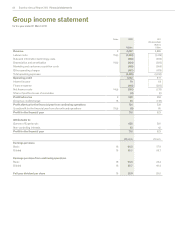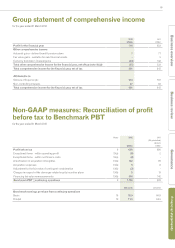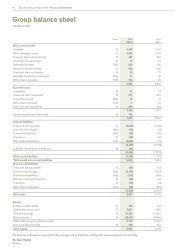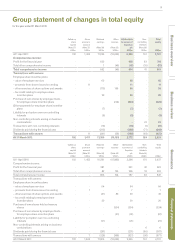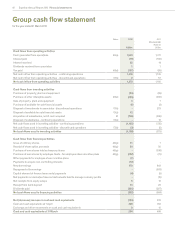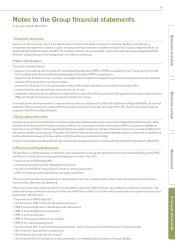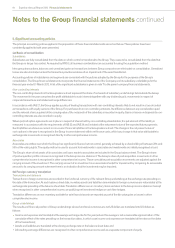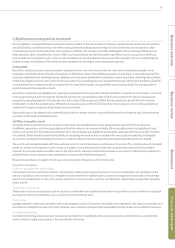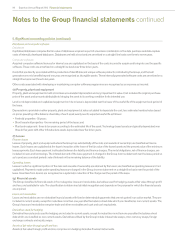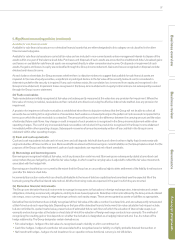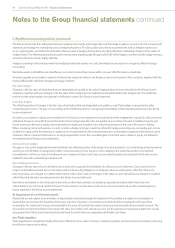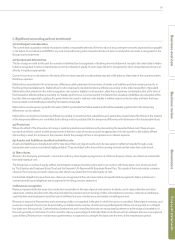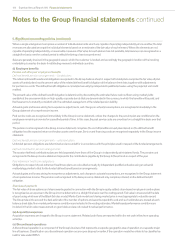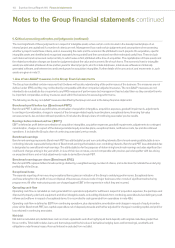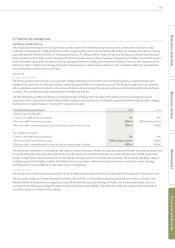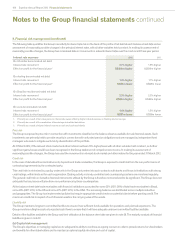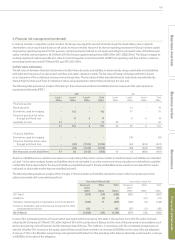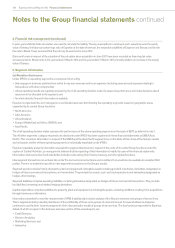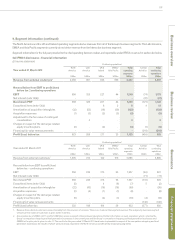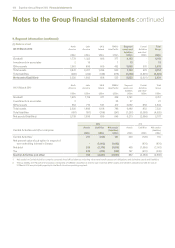Experian 2012 Annual Report Download - page 100
Download and view the complete annual report
Please find page 100 of the 2012 Experian annual report below. You can navigate through the pages in the report by either clicking on the pages listed below, or by using the keyword search tool below to find specific information within the annual report.
98 Experian Annual Report 2012 Financial statements
Notes to the Group financial statements continued
5. Significant accounting policies (continued)
The Group documents the relationship between hedging instruments and hedged items at the hedge inception, as well as its risk management
objective and strategy for undertaking various hedge transactions. The Group also documents its assessment, both at hedge inception and
on an ongoing basis, of whether the derivatives that are used in hedging transactions are highly effective in offsetting changes in fair values of
hedged items. This effectiveness testing is performed at every reporting date throughout the life of the hedge to confirm that the hedge remains,
and will continue to remain, highly effective.
Hedge accounting is discontinued when the hedging instrument expires or is sold, terminated or exercised or no longer qualifies for hedge
accounting.
Derivative assets and liabilities are classified as non-current unless they mature within one year after the balance sheet date.
Amounts payable or receivable in respect of interest rate swaps are taken to net finance costs over the period of the contracts, together with the
interest differentials reflected in foreign exchange contracts.
Fair value hedges
Changes in the fair value of derivatives that are designated and qualify as fair value hedging instruments are recorded in the Group income
statement, together with any changes in the fair value of the hedged asset or liability that are attributable to the hedged risk. The ineffective
portion of a fair value hedge is recognised in net finance costs in the Group income statement.
Cash flow hedges
The effective portion of changes in the fair value of derivatives that are designated and qualify as cash flow hedges is recognised in other
comprehensive income. The gain or loss relating to the ineffective portion is recognised immediately in total operating expenses in the Group
income statement.
Amounts accumulated in equity are reclassified in the Group income statement in the period when the hedged item impacts the Group income
statement. However, when the forecast transaction that is hedged results in the recognition of a non-financial asset or liability, the gains and
losses previously deferred in equity are transferred from equity and included in the initial measurement of the cost of the asset or liability.
When a hedging instrument expires or is sold, or when a hedge no longer meets the criteria for hedge accounting, any cumulative gain or loss
included in equity at that time remains in equity and is recognised when the forecast transaction is ultimately recognised in the Group income
statement. When a forecast transaction is no longer expected to occur, the cumulative gain or loss that was included in equity is transferred
immediately to the Group income statement.
Net investment hedges
Any gain or loss on the hedging instrument relating to the effective portion of the hedge of a net investment in an undertaking whose functional
currency is not US dollars is recognised in other comprehensive income; the gain or loss relating to the ineffective portion is recognised
immediately in net finance costs in the Group income statement. Gains and losses accumulated in equity are included in the Group income
statement when the undertaking is disposed of.
Non-hedging derivatives
Changes in the fair value of such derivative instruments are recognised immediately in the Group income statement. Costs and income in
respect of derivatives entered into in connection with social security obligations on employee share incentive plans, other than those of a
financing nature, are charged or credited within labour costs; other costs and changes in fair value on such derivatives are charged or credited
within financing fair value remeasurements in the Group income statement.
Derivatives embedded in other financial instruments or other host contracts are treated as separate derivatives when their risks and
characteristics are not closely related to those of host contracts, and the host contracts are not carried at fair value with unrealised gains or
losses reported in the Group income statement.
(l) Impairment of non-financial assets
Assets that are not subject to amortisation or depreciation are tested annually for impairment. Assets that are subject to amortisation or
depreciation are reviewed for impairment whenever events or changes in circumstances indicate that the carrying amount may not be
recoverable. An impairment charge is recognised for the amount by which the asset’s carrying amount exceeds its recoverable amount. The
recoverable amount is the higher of an asset’s fair value less costs to sell, and value-in-use. For the purposes of assessing impairment, assets
are grouped into CGUs, determined by the lowest levels for which there are separately identifiable cash flows.
(m) Trade payables
Trade payables are recognised initially at fair value. Where the time value of money is material, payables are then carried at amortised cost using
the effective interest rate method.


